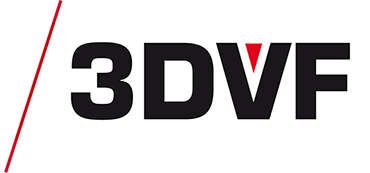This article is also available in:
French
During VIEW Conference 2021, which took place recently in Italy and online, we had the opportunity to attend a “Fireside chat with Sebastien Deguy”: the VP of 3D & Immersive at Adobe answered a few questions from Glenn Entis, co-founder of PDI (the studio that would later become DreamWorks).
They discussed topics such as the background of Sebastien Deguy, but also his vision of where the industry is headed. Here are our 6 takeaways from this interview.
1 Without Softimage, Substance Painter/Designer probably wouldn’t exist
Sebastien Deguy explained that when he was younger, he tried to join a Film School in Paris, but his application was denied. He then decided to work on a PhD. Researchers in France are required to teach at the same time, and he began teaching the now defunct 3D animation software Softimage to students. Which is when he realized that there were bridges to be built between his own research and computer graphics. Even better: using his work and his knowledge, he may be able to create texturing tools that would outperform everything that was available at the time.
He therefore decided, in 2003 and without a real business plan, to launch a software company: Allegorithmic was born, and went on to launch tools such as Substance Painter, Substance Designer. Allegorithmic was bought by Adobe in 2019.
Sebastien Deguy also expressed regrets when discussing the death of Softimage (Autodesk stopped developping this tool in 2014), highlighting that it was “a great product”.
2 Joining Adobe, “amazing and challenging at the same time”
Of course, Sebastien Deguy talked about joining Adobe, and what changed for him after Adobe acquired Allegorithmic. He explained that his new job as VP of 3D & Immersive can be challenging, since he used to be his own boss. The decision-making process is slower and involves more people, more back-and-forth. On the other hand, even though sometimes he just want things to move faster, this process means that the team ends up choosing better ideas. In other words, “there is a balance to be found”. Overall, he explains, his new job is “amazing and challenging at the same time”.
3 Blender, a door to the 3D ecosystem
Glenn Entis highlighted the fact that Adobe supports the Blender Foundation and donates to the Blender Development Fund, which might be surprising since Blender can be viewed as a competitor.
Sebastien Deguy explained that supporting open-source software does indeed make sense: “for an ecosystem to work, you need a lot of components for it to become sustainable, strong for the future”. He added that he sees Blender as an entry point to the CG ecosystem. In other words, by helping Blender, more people will begin using 3D software, including software from Adobe. He also highlighted that “competition is good for innovation”, and concluded that his team does use Blender, alongside many other tools.
4 Piracy, expensive sofware: “I’ve been there”
Since Blender was discussed, Sebastien Deguy and Glenn Entis also talked about the issue of the cost of software, and the fact that not everyone is willing to pay. “I’ve been there, I’ve been a student”, he admitted, while reminding that Adobe provides discounts for students.
5 Foreign languages, the key to success
Sebastien Deguy also discussed the importance of languages. More specifically, the importance, as a French entrepreneur, to learn English. During networking events and conferences, people used to tell him that they would “call him back eventually”: even though this meant they would definitely do so, “eventually” is close to a French word expressing uncertainty. He therefore thought people were not that interested in his company, and did not follow up. His takeway from this experience: if you need to use a foreign language for work, don’t hesitate to get better at it.
6 AI will surprise us
Asked about which technologies would have a huge impact in the next few years, Sebastien Deguy mentionned augmented reality/AR glasses, but also AI.
As Sebastien Deguy explains: at the moment, AI is used for mundane tasks, for example to add 3D objects into photos (which can be done using Adobe Stager) or for denoising renders. In the future, we may see breakthroughs in neural rendering (in other words, the creation of pictures using AI and without any 3D graphics involved), or even tools AI-based from the start, that would help artists explore a universe of possibilities and designs. In the end, this could even mean that when directors want an explosion to be “more magical” or when a customer wants an artistic creation to be “more corporate” or “more joyful”, artists would actually be able to do so intuitively, using regular controls or AI-based controls to fine tune the end result. Which basically means that AI would be able to “understand” abstract concepts, and to map human intuition.
Is this a dream that will never come true, or what lies just a few years from now? Sebastien Deguy is conviced we can do it, as long as we have enough data and computing power. The most difficult task, according to him, won’t be to achieve this level of AI but to find controls artists can actually use.

